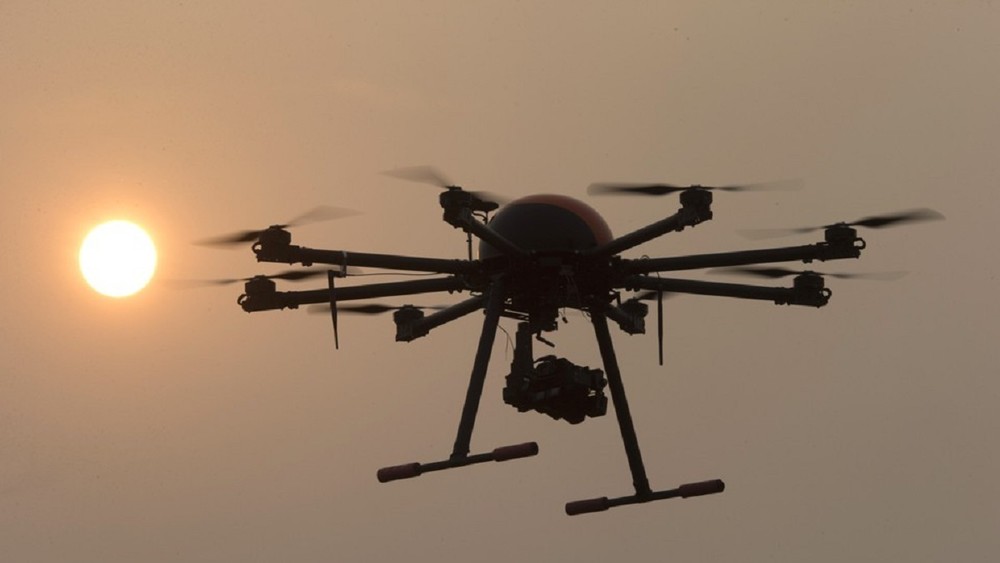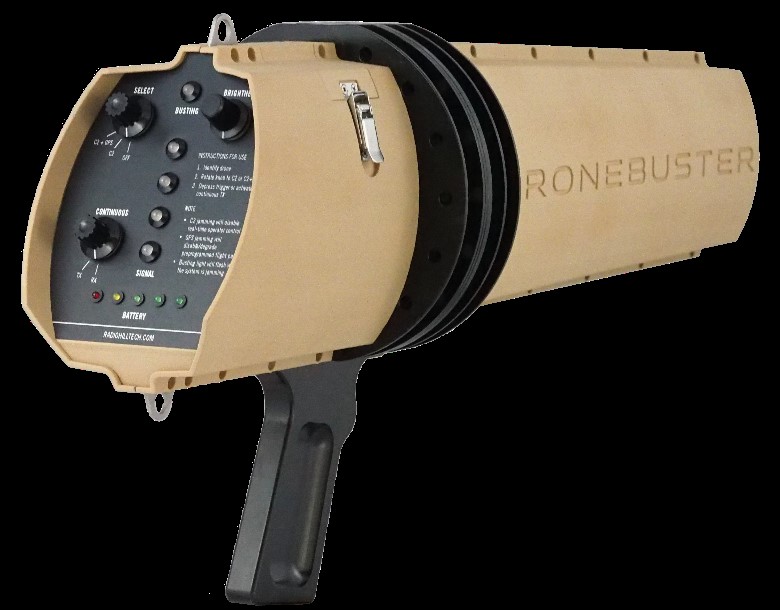Air Force Buys 100 Dronebuster Devices for Security Forces
By: Charlsy Panzino, June 15, 2017 (Photo Credit: Ng Han Guan/AP)

Instead of lugging around 30-pound counter-drone equipment, some security forces airmen will soon have a 5-pound device they can use to jam weaponized drones from the enemy.
The Air Force purchased 100 handheld Dronebuster devices, according to Clay Wild, vice president of marketing for Radio Hill Technologies, a Portland, Oregon-based technology startup that completed the contract for the Air Force.
The company worked with the Air Force’s Installation Contracting Agency on the $2.5 million purchase.
The use of weaponized drones by the Islamic State has been a rising concern for the past year or two. ISIS drones are now attacking U.S. Special Operations forces around Raqqa, Syria, as U.S.-backed Syrian Defense Forces attempt to liberate the militants' self-proclaimed capital, according to a report Wednesday in The Washington Post.
The Dronebuster can detect incoming radio frequency signals, which helps troops aim the device in low visibility. It can jam consumer and modified drone radios in several frequency bands, and the five custom antennae provide directional jamming over longer ranges, he said.
Wild said the company Radio Hill Technologieswill start delivering the Air Force systems in July, and then the company will train Air Force trainers on how to use the devices so they can train their airmen.
“There’s a little bit of classroom time that is warranted for the airmen to understand the radio frequency spectrum, how jammers work, what radio frequencies the drones are flying on versus regular communications versus other systems,” he said.
The classroom time and practice will only be a few hours, and the device itself is easy to use, Wild said.

Air Force Dronebuster
Radio Hill Technologies will start delivering 100 Dronebusters to the Air Force in July, and then train airmen on how to use the devices. Photo Credit: Courtesy of Radio Hill Technologies I
The Dronebuster, which starts at $30,000, has a “technique generator” that uses less than 10 percent of the battery power for the jamming signal. This allows the device to be smaller than other similar devices.
Most jamming tools are mounted on a rifle, with the jamming antennae stuck on the end of the rifle butt, Wild said. The power is kept in a backpack, and the whole system weighs about 30-40 pounds.
That’s a pretty big unit for airmen or soldiers to carry,” he said. “If any security forces personnel were going to deploy anything, it had to be really small.”
Anything smaller than 5 pounds is tough, Wild said, because the antennae must be a certain size.
Air Force Times
'If you can't talk, you can't fight': Compass Call planes confuse ISIS
Security forces with Air Force Global Strike Command will use the devices at a “variety of sites,” according to an emailed response the Air Force sent to Air Force Times.
“Countering the threat that small, unmanned aircraft systems pose, whether in the hands of hostile forces or negligent actors, is vital to ensuring continued air superiority and protecting U.S. personnel,” the statement said. “The Air Force identified the Dronebusters as an immediately available, off-the-shelf option to aid the Air Force in countering the emerging hostile threat posed by small, unmanned aircraft systems.”
The Air Force said they couldn’t release further details because of security reasons.
The Army's Rapid Equipping Force bought 50 Dronebusters in April.
Charlsy Panzino covers the Guard and Reserve, training, technology, operations and features for Army Times and Air Force Times. Email her at This email address is being protected from spambots. You need JavaScript enabled to view it..
